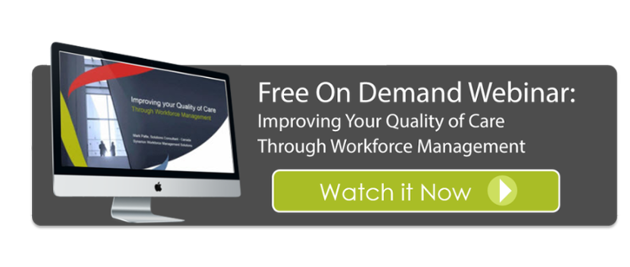 Seventy years ago, it wasn't uncommon for doctors to make house calls. In rural areas and big cities alike, the healthcare industry was a nomadic career that required attending births and caring for the sick in their own home. Today's healthcare landscape may look different now but an aging population coupled with out-of-control spending in inpatient institutions makes in-home care an attractive and necessary option for tomorrow's healthcare industry. As the healthcare industry transitions from the hospital to the home, healthcare leaders need to start considering how to manage these changes effectively and time keeping is the perfect place to start.
Seventy years ago, it wasn't uncommon for doctors to make house calls. In rural areas and big cities alike, the healthcare industry was a nomadic career that required attending births and caring for the sick in their own home. Today's healthcare landscape may look different now but an aging population coupled with out-of-control spending in inpatient institutions makes in-home care an attractive and necessary option for tomorrow's healthcare industry. As the healthcare industry transitions from the hospital to the home, healthcare leaders need to start considering how to manage these changes effectively and time keeping is the perfect place to start.
Ditching the Spreadsheets
Healthcare has historically lagged behind other industries when it comes to workplace management systems. Rather than investing their resources in workforce management software, many have committed resources to upgrading and adding healthcare instrumentation and devices. While this benefits the patients, the minimal cost and maximum savings gained by using workforce management software offsets the initial costs with increased productivity and more efficient scheduling. Managers can easily avoid under staffing while employees can easily request time off with a simple log in. This reduces scheduling mistakes and ensures full staff coverage for all patients. As healthcare changes to a home-care model, employers will need to make upgrades to their time tracking system to offer easier scheduling for managers and employees.
Getting a Clear Picture
Home-based healthcare will be a challenge for those used to a hospital-based system but home aides and caregivers have been paving the way for decades. Employers need to gain a clear picture of how employees are spending their working hours to determine how many hours are being spent on patient care and how many hours on travel. With time tracking software, this process can be streamlined by giving both managers and employees access to individual schedules. Employees can log their travel time which allows managers to make better scheduling decisions to maximize patient care. With traditional time keeping methods, this granularity simply isn't available. Upgrading your time keeping system allows healthcare providers to include more information in their schedules for better patient care.
Keeping Employees Updated
One of the bigger drawbacks of home-based healthcare will be keeping employees connected with their manager and their team. When employees are sick or waylaid by transportation issues, quickly communicating with and adjusting staff schedules is essential. An automated time keeping system allows all staff to have access to up-to-date schedules. It also allows managers to communicate with staff easily and discretely to fill in schedule gaps. Keeping employees connected while they work remotely is essential as modern healthcare moves homebound.
Healthcare may not currently be a primarily home-based system but it's rapidly moving in that direction. Keeping healthcare spending in check and providing quality care to an aging population requires it. For healthcare providers to be up to the challenge, they need to have the right tools at their disposal to maximize their time and resources. A better time keeping system is absolutely essential in maintaining an efficient work schedule and easing the burden of communication for remote employees. Before healthcare fully transitions to home care, start making changes in your time keeping system to get prepared.
